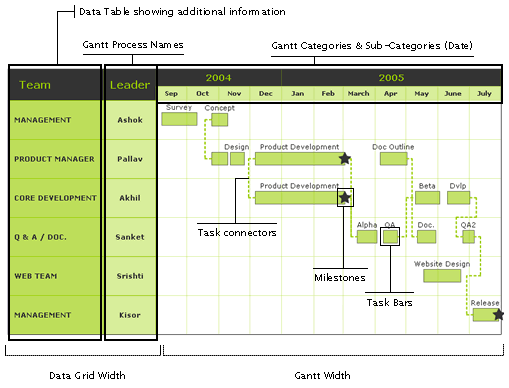FusionCharts Gantt chart consists of the following elements:
- Categories and sub-categories (Dates)
- Process names
- Data Table for showing additional information
- Gantt Task Bars
- Milestones
- Task Connectors
- Trend Lines
- Hover Caption
Here we’ll see each of them in detail. Let’s first have a look at a standard Gantt chart enlisting a few of the above elements:

A Gantt chart is constructed with a horizontal axis representing the total time span of the project, broken down into increments (for example, days, weeks, or months). FusionCharts Gantt chart allows you to define any number of sub-categories to show dates broken into smaller units.
For example, if you were to show a Gantt Chart spanning 2 years, you can the first sub-category as quarters, then divide these quarters into months, then weeks, and finally into days. This is all possible with FusionCharts Gantt Chart.